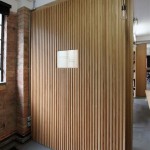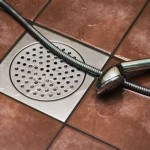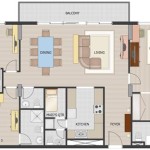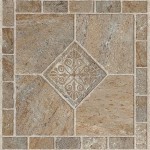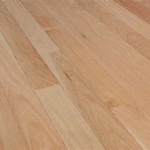Does Roomba Scratch Wood Floors?
Robotic vacuums, like Roomba, are increasingly popular for their convenience and ability to maintain clean floors. However, a common concern among homeowners with hardwood floors is the potential for scratches. While Roomba and other robotic vacuums are generally designed to be gentle on floors, the risk of scratches can vary depending on several factors. It's essential to understand these factors to make an informed decision about using a robotic vacuum on your wood floors.
Factors Influencing Scratch Potential
Several factors can contribute to the likelihood of a Roomba scratching wood floors. These include:
1. The Type of Wood Flooring
The type of wood flooring plays a significant role in scratch susceptibility. Softwood flooring, like pine or cedar, is more susceptible to scratches compared to hardwood flooring like oak or maple. Similarly, engineered wood flooring, which has a thin layer of wood veneer on top of a plywood core, is more prone to scratches than solid hardwood flooring.
2. The Finish on the Floor
The finish applied to the wood floor also influences scratch resistance. Polyurethane finishes are generally more durable and resistant to scratches than wax-based finishes. If your wood floor has a thin or worn-out finish, it's more likely to be scratched by a robotic vacuum.
3. The Design of the Robotic Vacuum
The design of the robotic vacuum, particularly the brushes and wheels, can impact scratch potential. Roomba models with rubber brushes and wheels are generally less likely to scratch wood floors than models with bristle brushes or hard plastic wheels. Some models also feature features designed to reduce the risk of scratches, such as sensors that detect obstacles and adjust cleaning patterns accordingly.
4. The Condition of the Floor
The condition of the floor can also impact the likelihood of scratches. If your wood floor has loose or uneven boards, the Roomba's brushes or wheels may rub against the wood more aggressively, increasing the risk of scratches. Additionally, dirt, debris, and other objects on the floor can become lodged in the Roomba's brushes and wheels, increasing the potential for scratches when the vacuum moves over the floor.
Minimizing the Risk of Scratches
While the risk of scratches from a Roomba cannot be entirely eliminated, several steps can be taken to minimize the potential:
1. Choose a Roomba Model with Rubber Brushes and Wheels
Roomba models with rubber brushes and wheels are generally more gentle on wood floors compared to models with bristle brushes or hard plastic wheels. Rubber brushes are less likely to catch on floor imperfections, and rubber wheels provide better traction, reducing the likelihood of the vacuum scraping against the floor.
2. Ensure a Clean Floor Before Using the Roomba
Regularly clean your wood floor to remove dirt, debris, and other objects that could potentially damage the floor or clog the Roomba's brushes. This reduces the risk of the brushes dragging across the floor and causing scratches.
3. Use a Floor Protection Mat
Consider using a floor protection mat in high-traffic areas where the Roomba frequently travels. This can help protect the floor from scratches and scuffs caused by the vacuum's wheels and brushes.
4. Supervise the Roomba When It's Operating
While robotic vacuums are designed to be autonomous, it's still recommended to supervise them, especially during the initial use on new wood floors. This allows you to identify any potential issues or areas where the vacuum is dragging or rubbing against the floor.
Additional Considerations
It's important to note that even with the most careful precautions, there is always a small risk of scratches occurring. If you have concerns about your wood floors, consider consulting a professional flooring technician to discuss your specific needs and options. They can provide recommendations tailored to your floor type and recommend additional measures for protecting your floors.
In conclusion, while there's a risk of scratches from a Roomba on wood floors, it can be minimized by considering the factors outlined above and taking appropriate precautions. Ultimately, the decision of whether to use a robotic vacuum on your wood floors is a personal one. By weighing the potential risks and benefits, you can make an informed decision that suits your needs and preferences.

Why Does The Robot Vacuum Cleaner Damage Hardwood Floors Thamtu

Will That Robotic Vacuum Damage The Floor Dream Hardwood Floors Llc

6 Best Robot Vacuums For Hardwood To Buy In 2024 Mashable

Roomba Scratch Hardwood Floors

Why Is Roomba Leaving Marks On Floor How To Prevent Them From Scratching Vacuumstyle

Roomba Scratch Hardwood Floors

6 Best Robot Vacuums For Hardwood To Buy In 2024 Mashable

Are Robot Vacuums Safe For Hardwood Floors Woodchuck Flooring

6 Best Robot Vacuums For Hardwood To Buy In 2024 Mashable

Do Robot Vacuum Cleaners Scratch Floors Ecovacs Us

